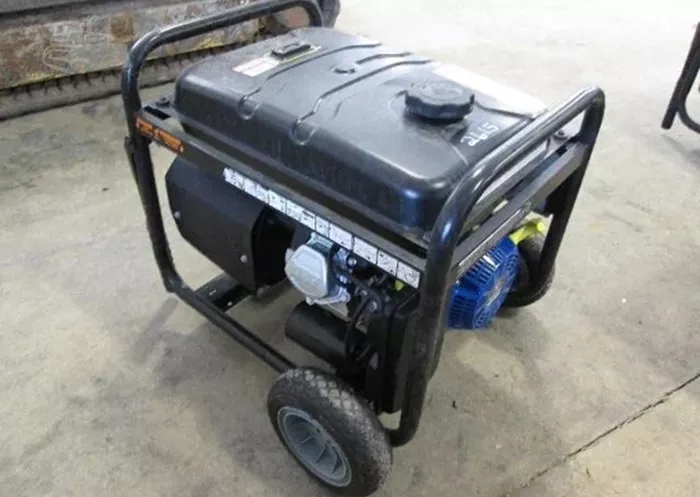Power outages can happen unexpectedly, leaving your home in the dark. For a 4-bedroom house, having the right generator is essential to keep your family comfortable and safe. But how do you determine the correct generator size? This guide will walk you through everything you need to know.
Why Do You Need a Generator for a 4-Bedroom House?
A 4-bedroom house typically has multiple appliances, lighting systems, and electronics that require power. During an outage, a generator ensures:
- Continuous power for essential appliances like refrigerators and heating systems.
- Comfort for your family, especially during extreme weather.
- Protection for sensitive electronics from power surges.
Without a generator, you risk food spoilage, discomfort, and even safety hazards.
Understanding Generator Sizes and Wattage
Generators are measured in watts, which indicate how much power they can produce. To determine the right size for your home, you need to calculate your total wattage requirements.
Starting vs. Running Wattage
Starting Wattage: The extra power needed to start appliances with motors (e.g., refrigerators, air conditioners).
Running Wattage: The power required to keep appliances running once they’ve started.
Always account for both when sizing your generator.
How to Calculate Your Power Needs
To find the right generator size, follow these steps:
Step 1: List Essential Appliances
Make a list of the appliances and systems you want to power during an outage.
For a 4-bedroom house, this typically includes:
- Refrigerator
- Heating or cooling system
- Lights
- Sump pump
- Microwave
- Television
- Charging devices
Step 2: Check Wattage Requirements
Check the owner’s manual or label on each appliance to find its starting and running wattage.
Here’s an example:
Refrigerator: 800 running watts, 1,200 starting watts
Central AC: 3,500 running watts, 5,000 starting watts
Lights: 60 watts per bulb
Sump pump: 1,000 running watts, 2,300 starting watts
Step 3: Add Up the Wattage
Add the running wattage of all appliances you plan to use simultaneously. Then, add the highest starting wattage to this total. This will give you the minimum generator size you need.
For example:
Running wattage total: 6,000 watts
Highest starting wattage: 5,000 watts
Total generator size needed: 11,000 watts
Recommended Generator Sizes for a 4-Bedroom House
Based on average power needs, here’s a general guideline:
7,000 to 10,000 Watts
This size is ideal for powering essential appliances and a few extras. It’s suitable for smaller 4-bedroom homes with moderate energy usage.
10,000 to 15,000 Watts
For larger 4-bedroom homes with central air conditioning, multiple refrigerators, or other high-power appliances, a generator in this range is recommended.
Whole-House Generators (17,000+ Watts)
If you want to power your entire home seamlessly, consider a whole-house generator. These are permanently installed and can handle all your appliances and systems.
Types of Generators for a 4-Bedroom House
There are three main types of generators to consider:
Portable Generators
- Affordable and versatile.
- Ideal for powering a few essential appliances.
- Requires manual setup and fueling.
Inverter Generators
- Quieter and more fuel-efficient.
- Great for sensitive electronics.
- Typically smaller in size, so they may not power an entire home.
Standby Generators
- Permanently installed and automatically turn on during an outage.
- Can power your entire home.
- More expensive but highly convenient.
Fuel Types: Which Is Best?
Generators run on different fuels, each with its pros and cons:
Gasoline
- Pros: Readily available and affordable.
- Cons: Shorter shelf life and less efficient.
Propane
- Pros: Cleaner burning and longer shelf life.
- Cons: Requires storage tanks and may cost more.
Diesel
- Pros: Highly efficient and durable.
- Cons: Noisier and more expensive upfront.
Natural Gas
- Pros: Continuous supply if connected to a gas line.
- Cons: Requires professional installation.
Installation and Safety Tips
Proper installation and usage are crucial for safety and efficiency.
Hire a Professional
For standby generators, always hire a licensed electrician to handle installation.
Placement Matters
- Place portable generators outdoors, away from windows and doors, to prevent carbon monoxide poisoning.
- Ensure proper ventilation for all generator types.
Use a Transfer Switch
A transfer switch prevents backfeeding, which can be dangerous to utility workers and your home’s electrical system.
Regular Maintenance
- Check oil levels and filters regularly.
- Run your generator periodically to ensure it’s in good working condition.
Cost of Generators for a 4-Bedroom House
The cost varies based on type, size, and features:
Portable generators: 500to2,000
Inverter generators: 1,000to3,000
Standby generators: 3,000to10,000+
Factor in installation costs for standby generators, which can add 1,000to5,000.
Conclusion
Selecting the right generator for your 4-bedroom house depends on your power needs, budget, and preferences. By calculating your wattage requirements and understanding the different types of generators, you can make an informed decision. Whether you opt for a portable, inverter, or standby generator, having a reliable power source will ensure your home stays safe and comfortable during outages.
Related topic:
- What Can a 3000 Watt Generator Run?
- How Much Can a 16kW Generator Power?
- 4 Best Portable Solar Generator for Home Use

